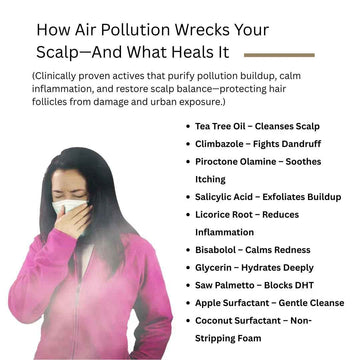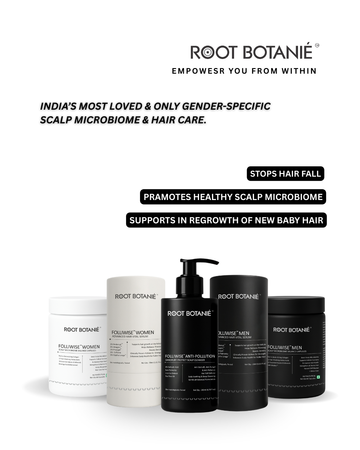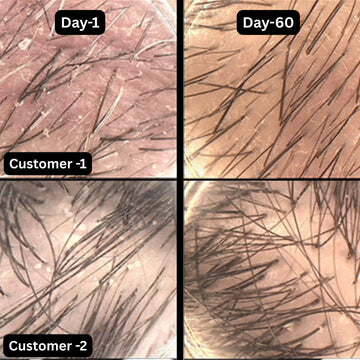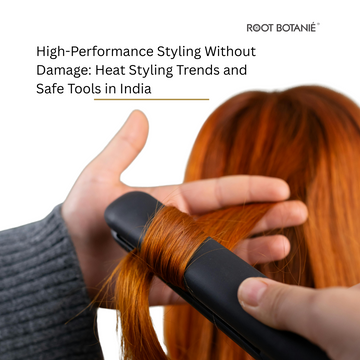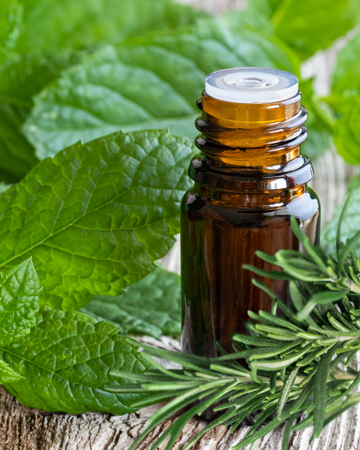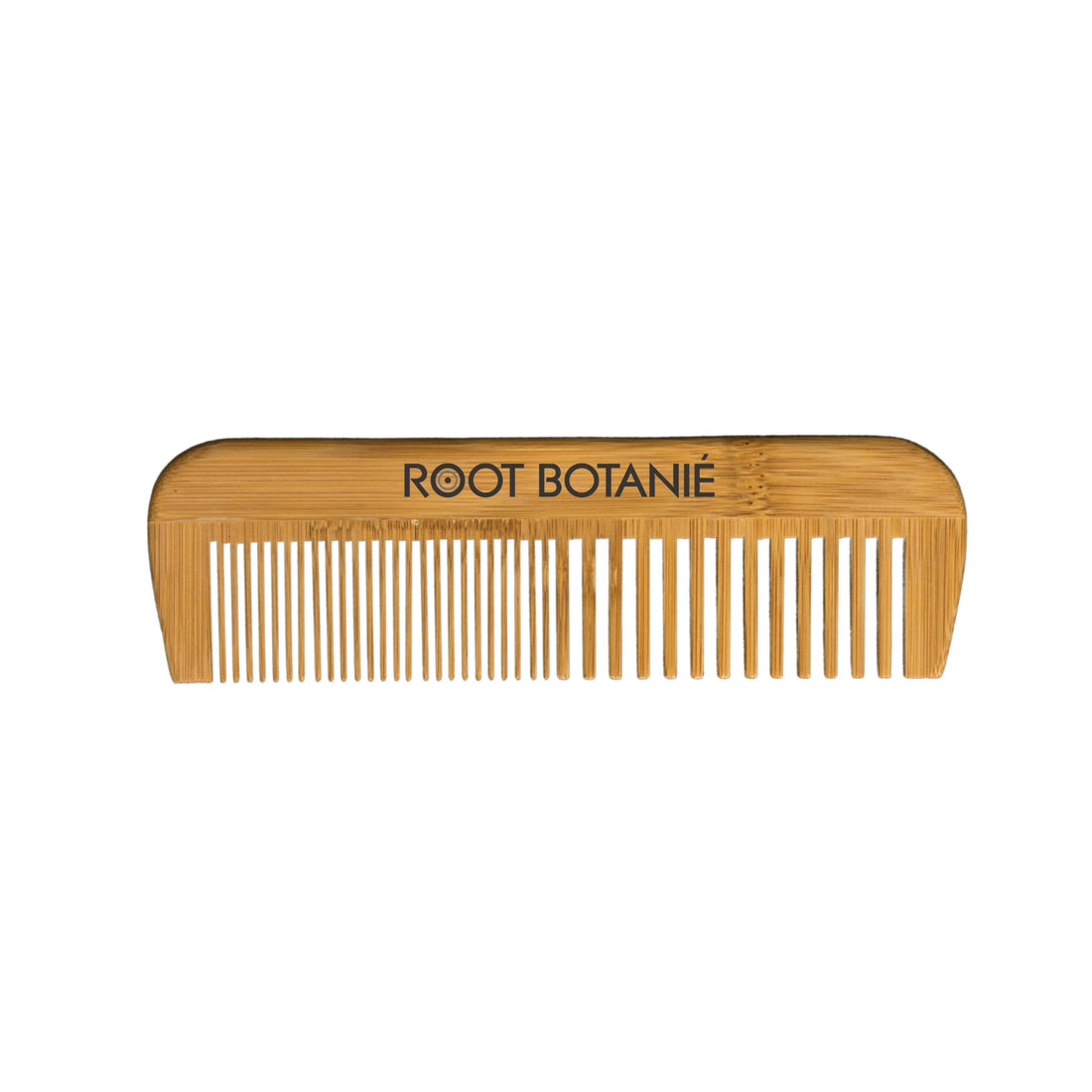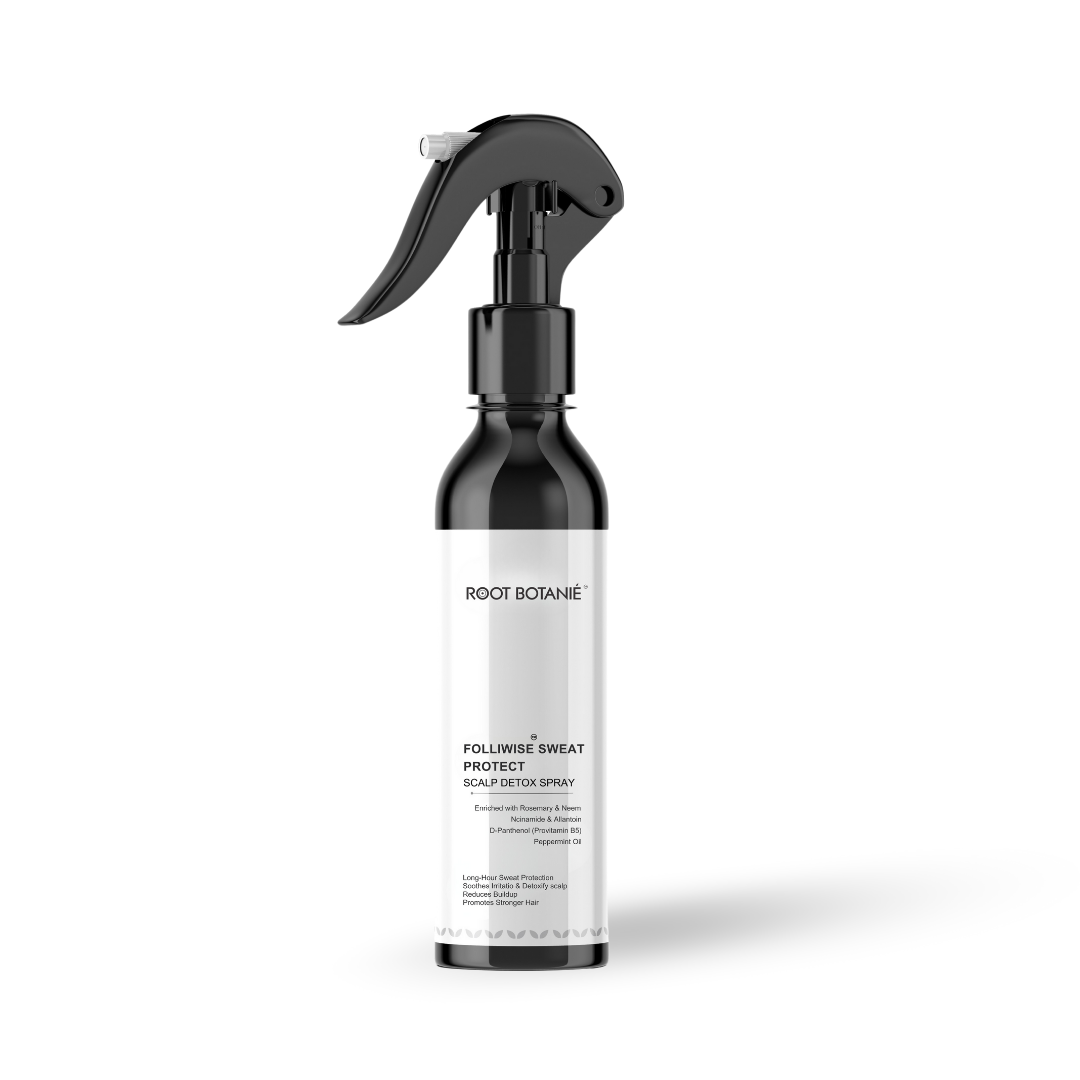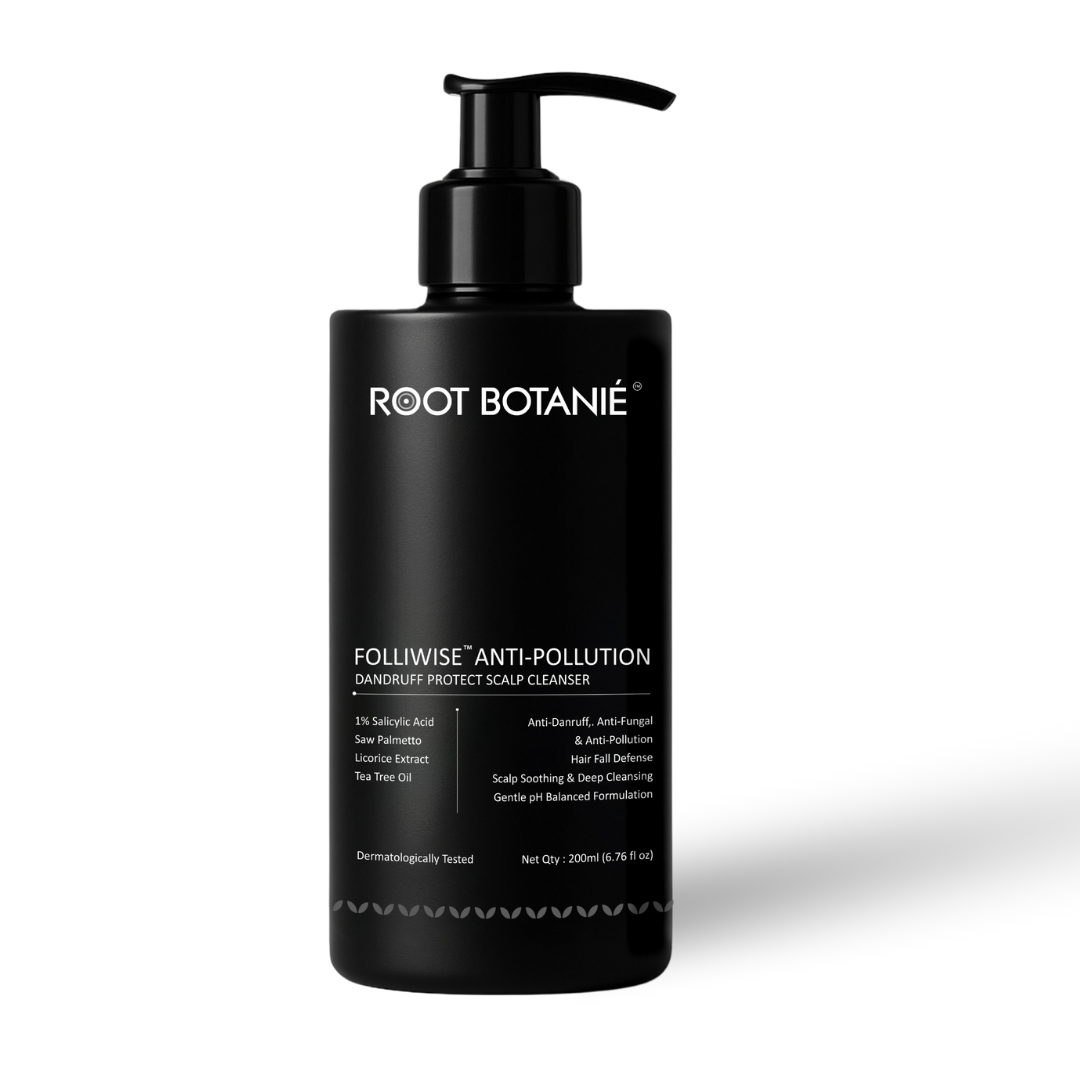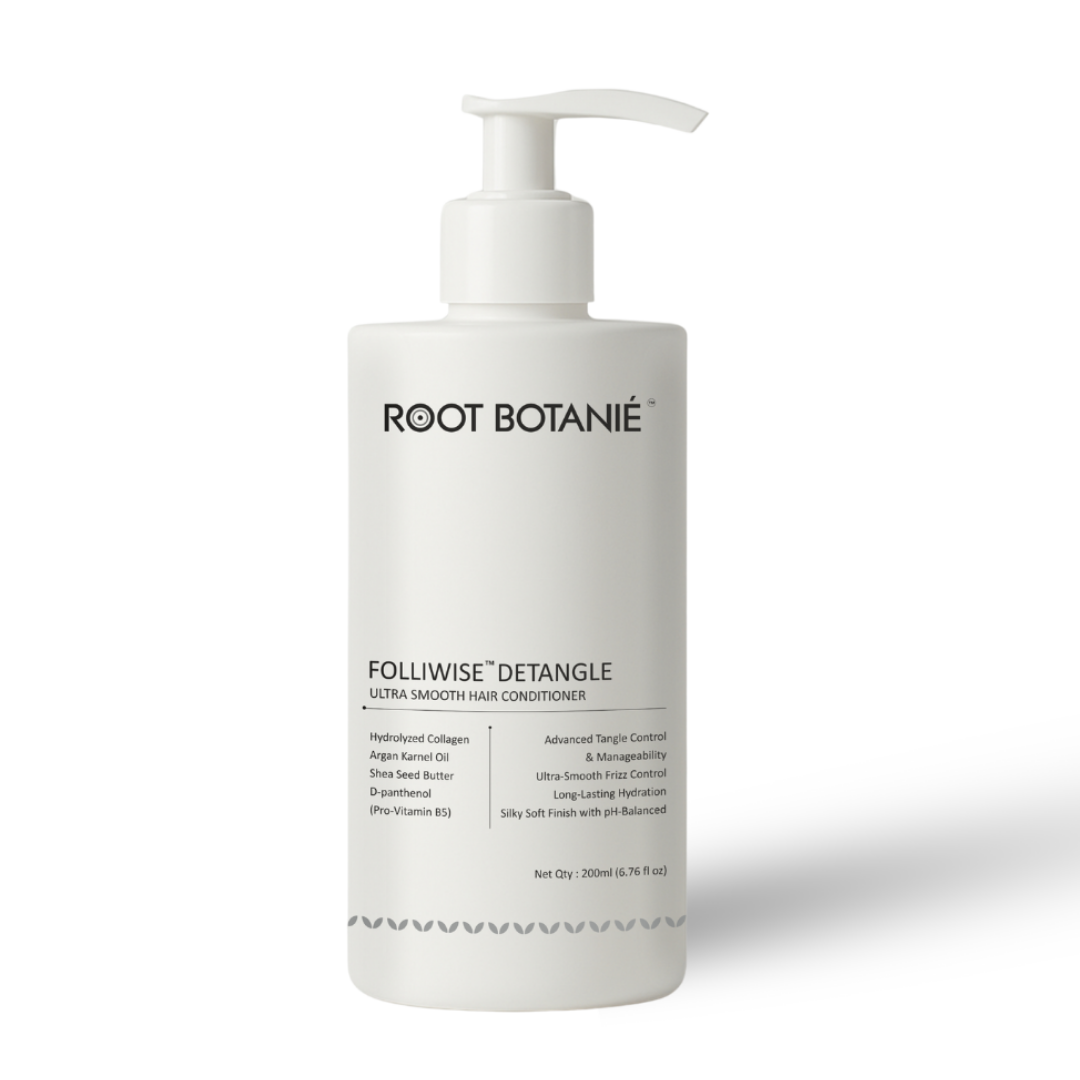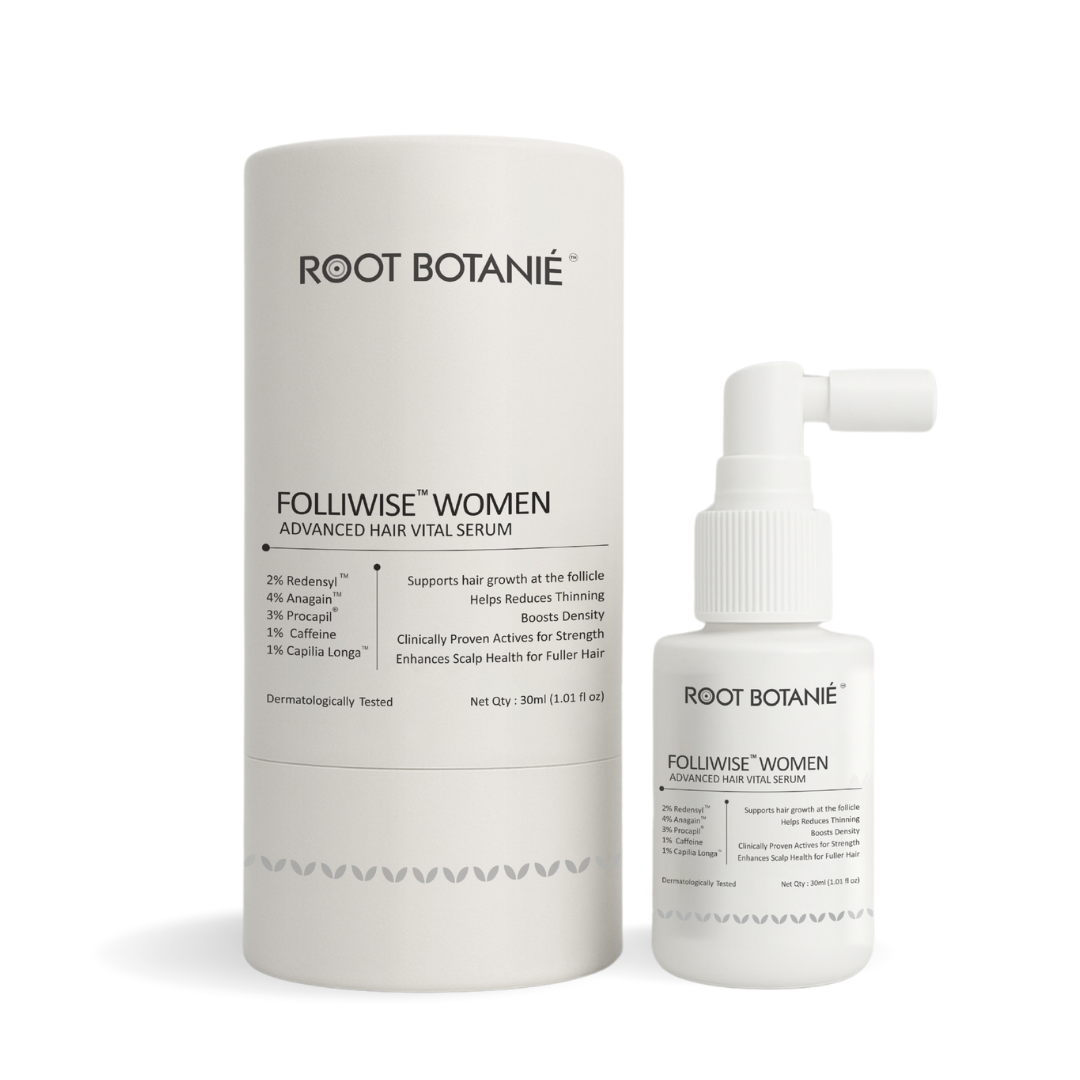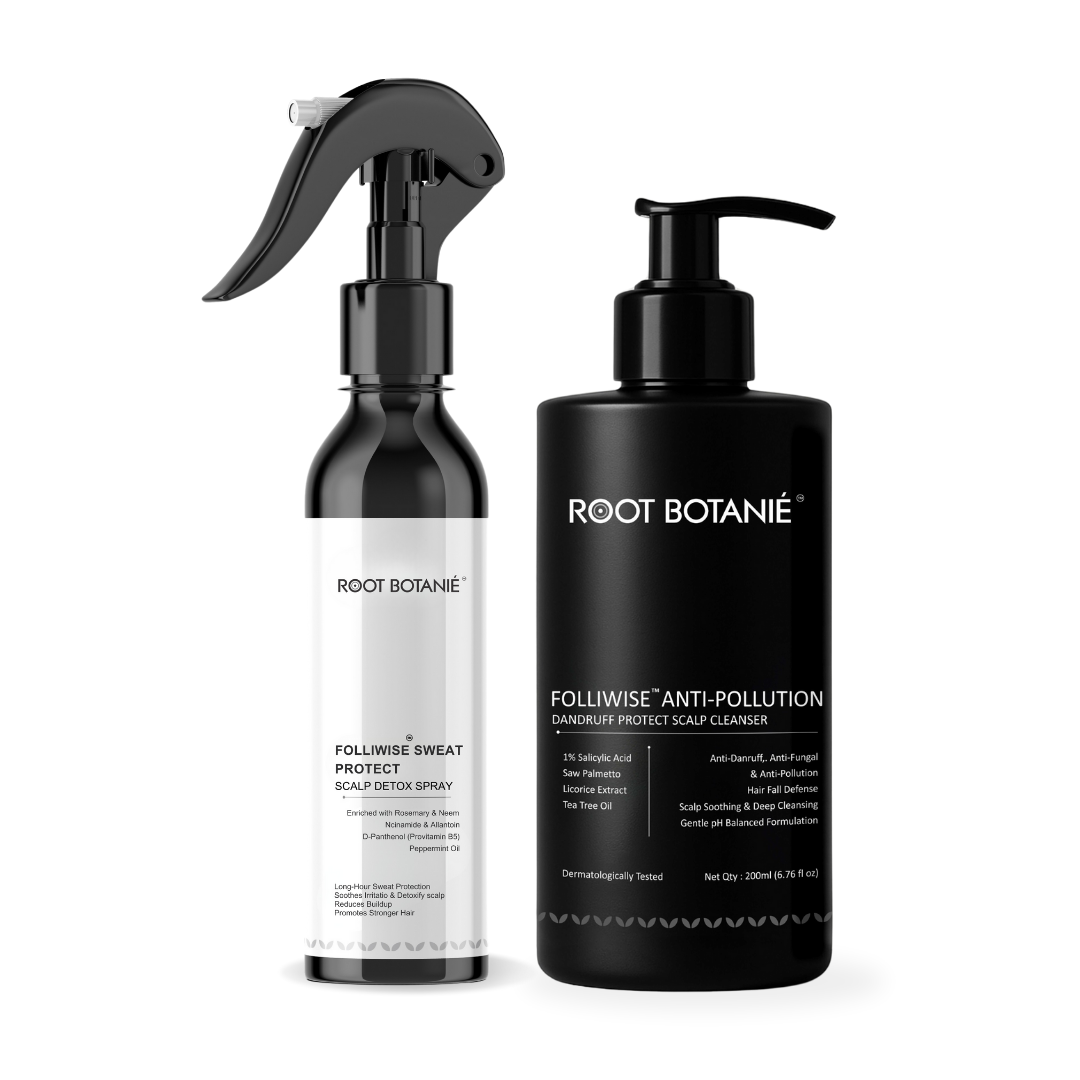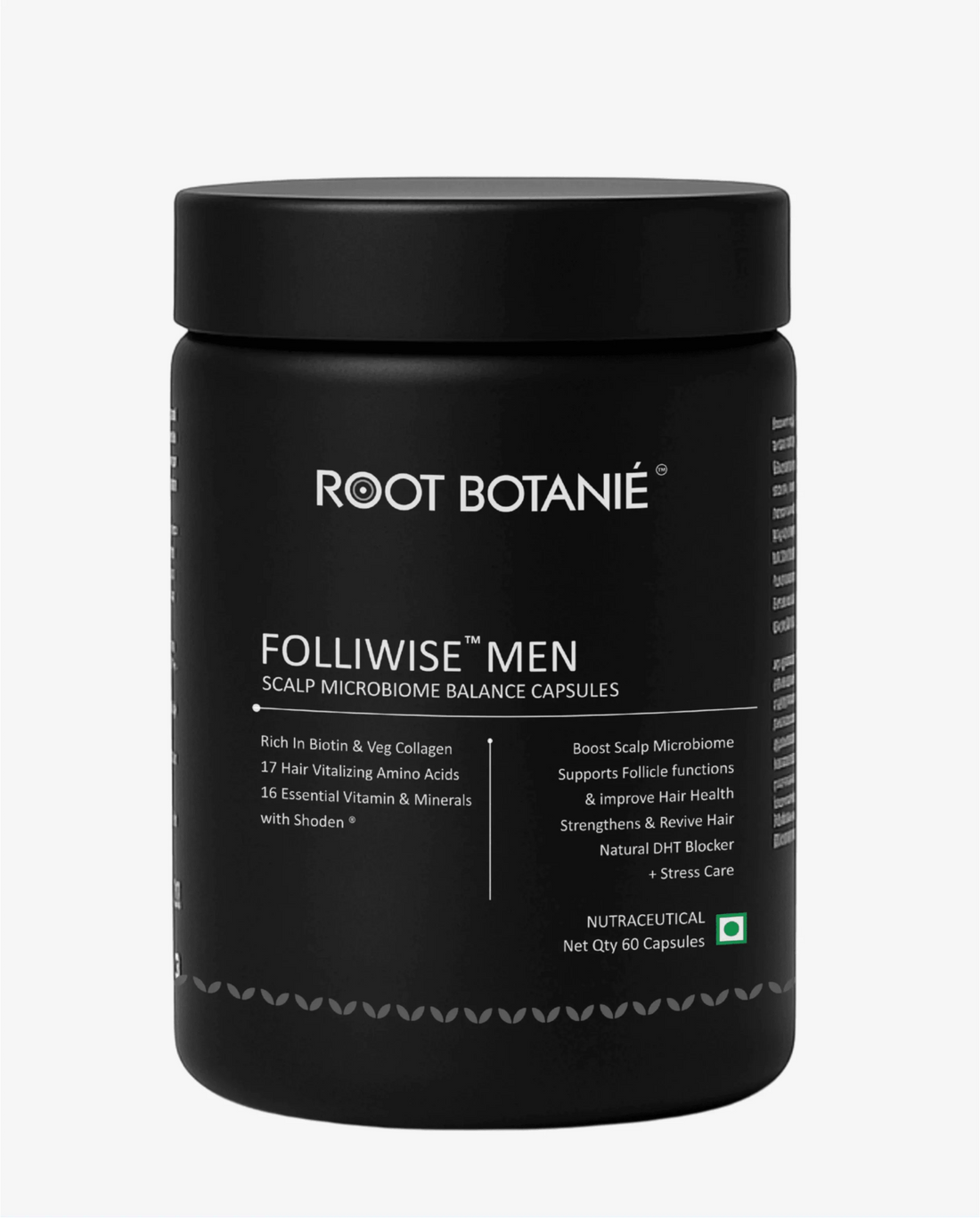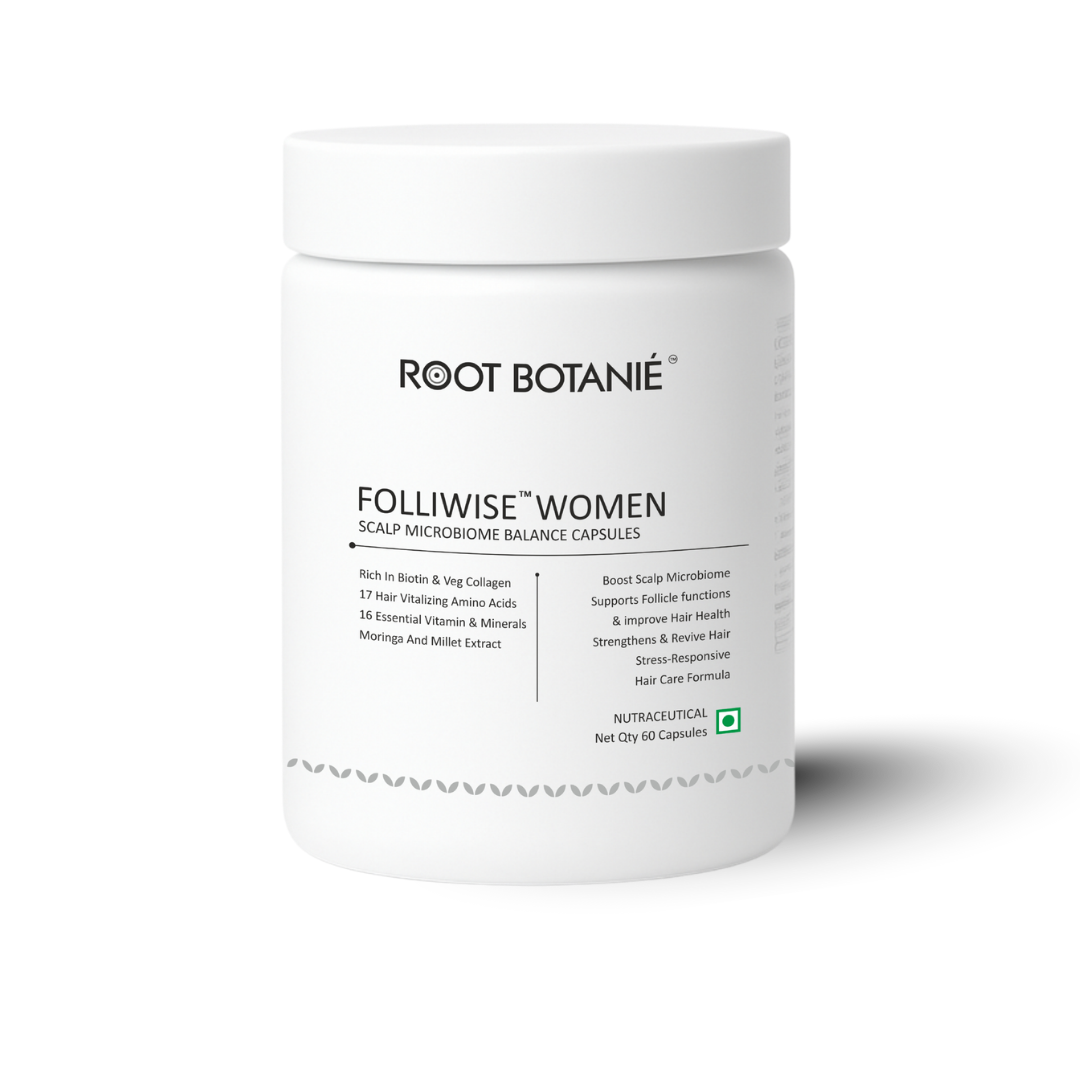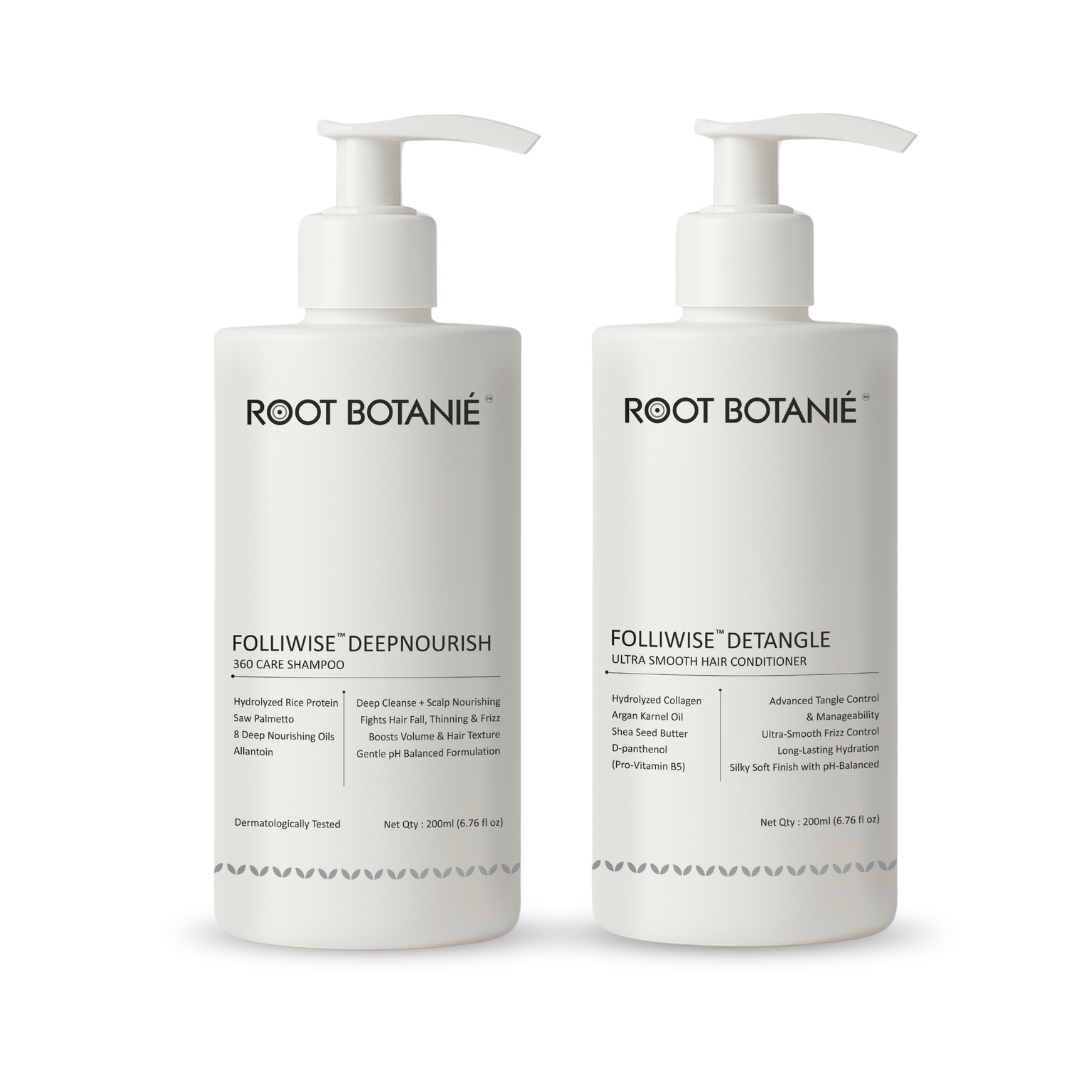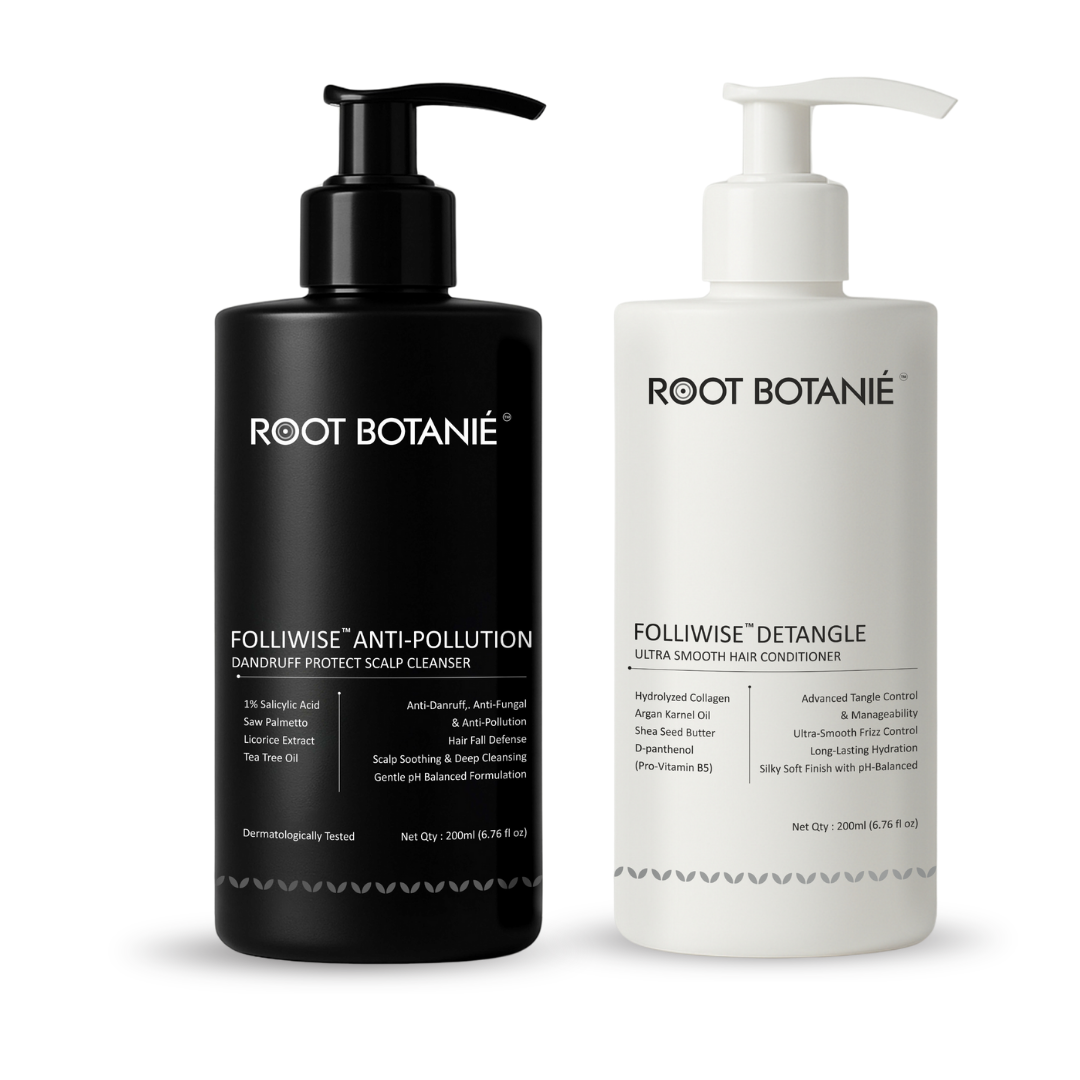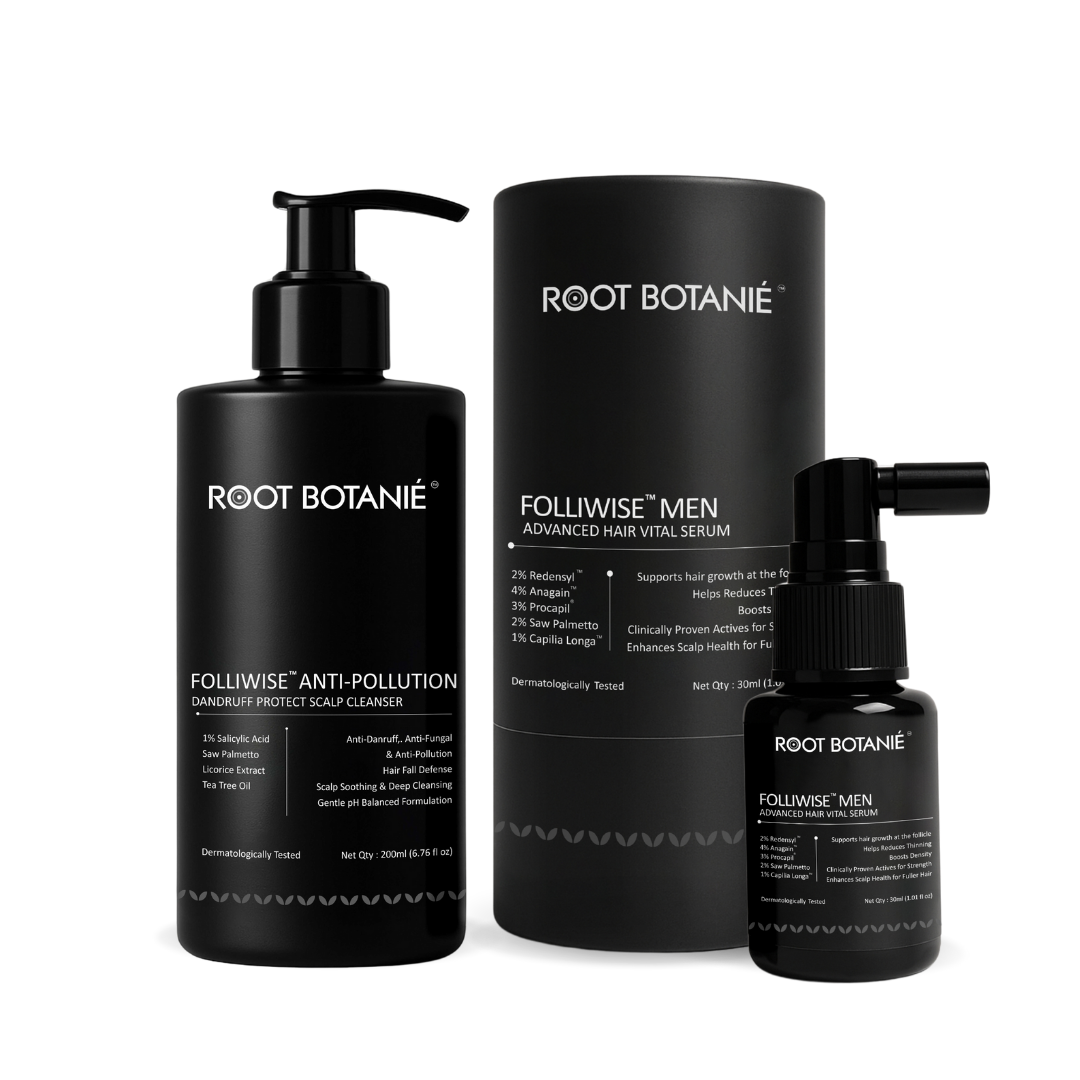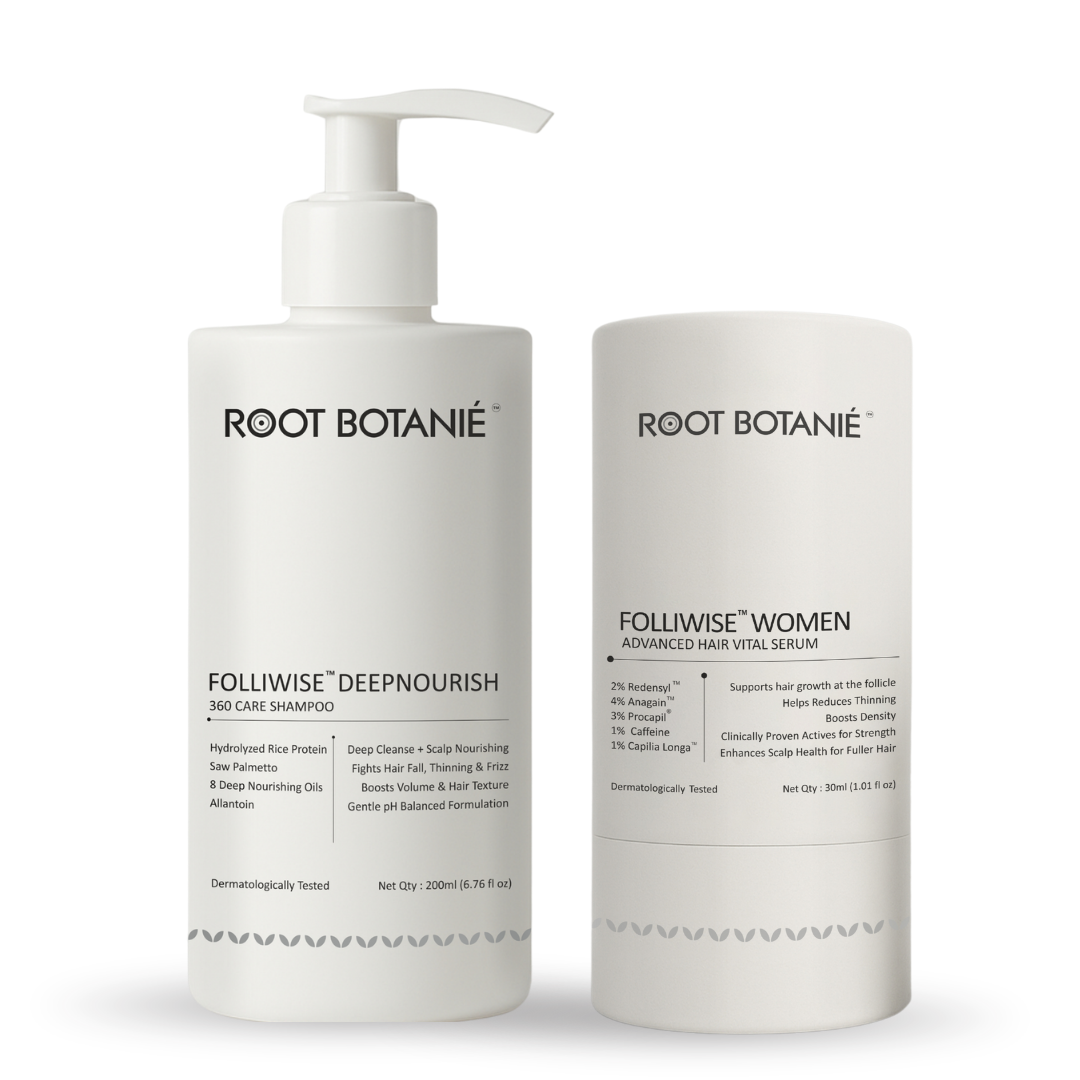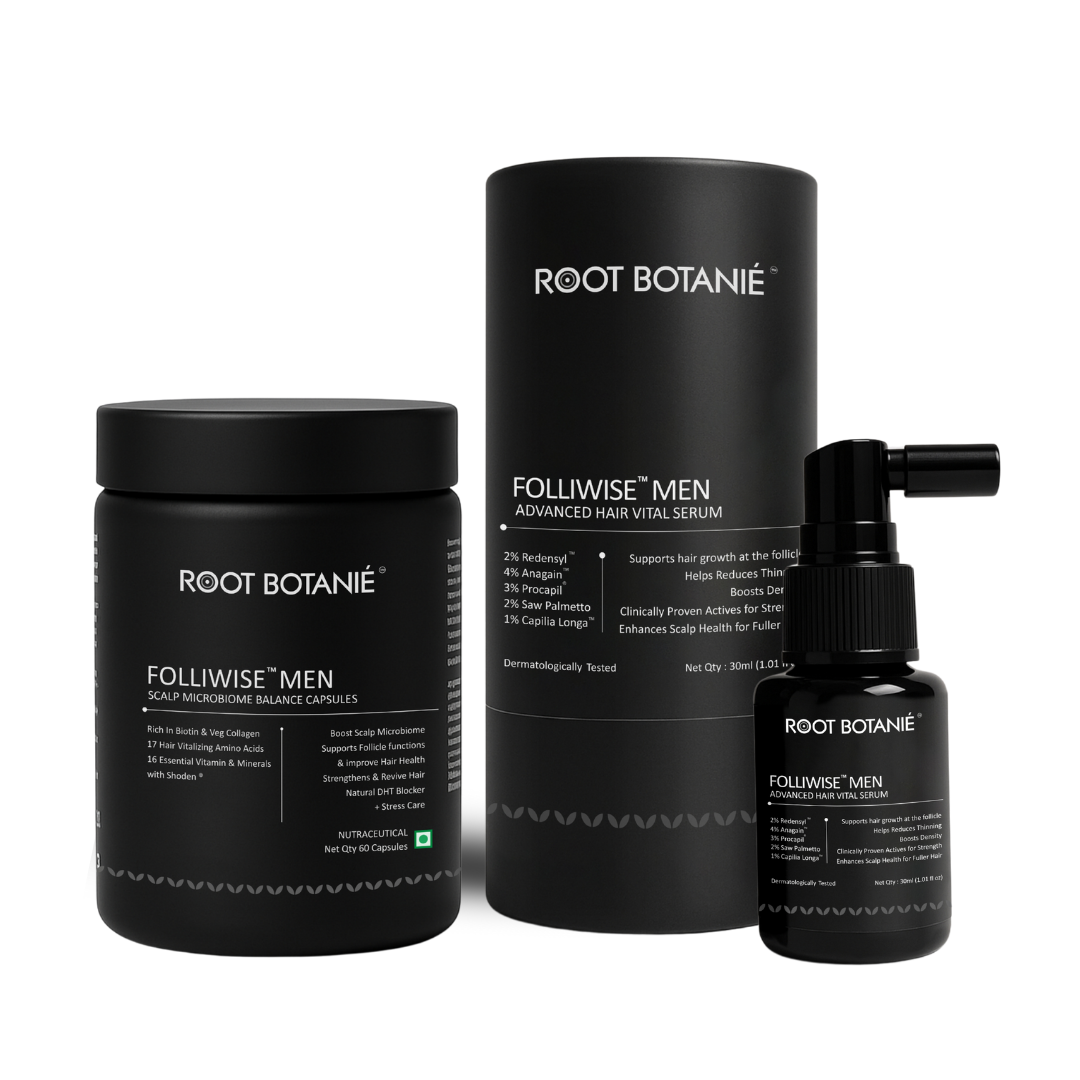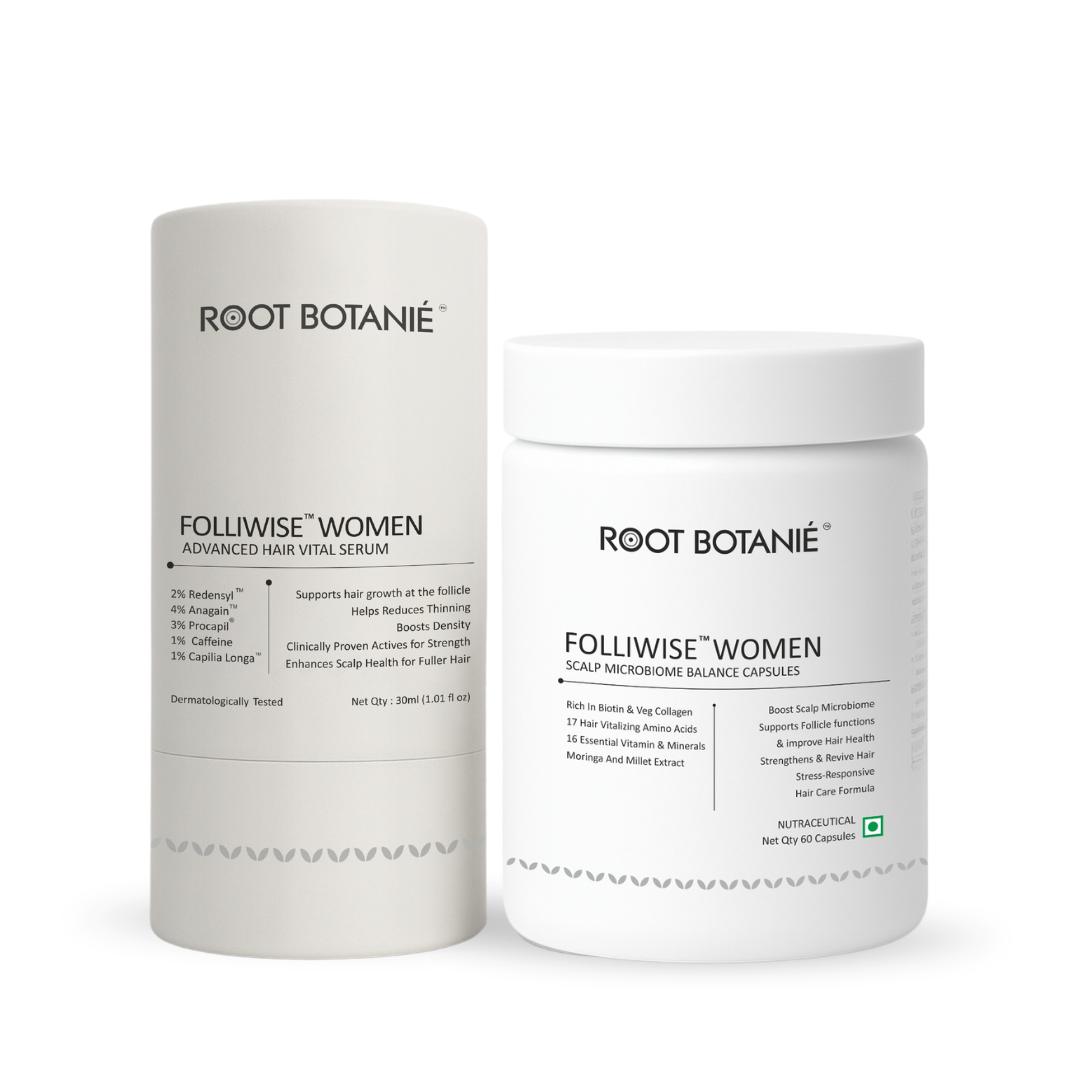How Air Pollution Damages Your Hair and Scalp
The Why :
We often think of pollution as damaging to our lungs or skin—but your scalp and hair are usually the first to suffer. Constant exposure to airborne toxins like dust, smoke, soot, and harmful gases silently undermines scalp health, weakens hair follicles, and causes premature hair loss and persistent dandruff.
Urban living, industrial areas, and even daily commutes expose your scalp to a toxic mix of particulate matter (PM2.5, PM10), nitrogen dioxide, and sulfur dioxide. The result? A distressed scalp, clogged follicles, and fragile, dull strands.
Fortunately, certain plant-based and scientifically backed ingredients can defend your scalp barrier, detox buildup, and soothe inflammation.
How Air Pollution Affects the Hair and Scalp
🧪 1. Scalp Congestion and Follicle Blockage
Pollution particles settle on the scalp, mixing with sebum and sweat to form a sticky residue. This clogs follicles, disrupts oil balance, and suffocates root health—leading to itching, dandruff, and slowed hair growth.
🔥 2. Oxidative Stress and Inflammation
Airborne pollutants trigger oxidative stress, causing damage at the cellular level. This leads to chronic scalp irritation, redness, and an inflamed hair root environment—all of which weaken follicles.
💧 3. Loss of Moisture and Shine
Pollutants strip away natural oils from the scalp and hair strands. The result is dry, brittle hair that’s more prone to breakage, frizz, and split ends.
🧬 4. Accelerated Hair Fall
With follicle damage, increased inflammation, and poor circulation, the hair growth cycle is interrupted—resulting in premature shedding.
Top Ingredients That Fight Back Against Pollution-Induced Scalp Damage
Thankfully, there are several safe and effective ingredients, many of them plant-derived or naturally occurring, that can detoxify and repair the scalp. Here's a breakdown of the most effective actives and how they protect your scalp from pollution:
1. Tea Tree Leaf Oil – The Antibacterial Purifier
Function: Derived from the Tea Tree plant, this oil is known for its antiseptic and antifungal properties.
Benefits:
Clears pollution buildup and scalp toxins
Fights microbial dandruff and fungal infections
Reduces inflammation and scalp acne
2. Climbazole & Piroctone Olamine – The Dandruff Duo
Function: Both are antifungal agents that work at the follicular level.
Benefits:
Control the growth of Malassezia, the yeast responsible for dandruff
Reduce itching, scaling, and scalp redness
Restore the microbiome balance damaged by pollutants
3. Salicylic Acid – The Scalp Exfoliator
Function: A beta-hydroxy acid (BHA) known for deep exfoliation.
Benefits:
Gently removes dead skin cells and pollutant buildup
Unclogs follicles and reduces flakiness
Allows better penetration of other actives
4. Licorice Root Extract – The Ayurvedic Soother
Function: A potent anti-inflammatory and brightening agent from Glycyrrhiza Glabra.
Benefits:
Soothes scalp irritation caused by pollutants
Reduces redness and restores comfort
Supports scalp healing and resilience
5. Bisabolol – The Chamomile-Derived Calmer
Function: A gentle, natural ingredient extracted from Chamomile.
Benefits:
Reduces oxidative stress from pollution exposure
Calms irritated, inflamed scalps
Enhances the overall comfort of scalp treatments
6. Glycerine – The Deep Hydrator
Function: A plant-derived humectant that retains moisture.
Benefits:
Replenishes hydration stripped by pollution
Prevents dry, itchy scalp
Keeps hair strands supple and soft
7. Saw Palmetto Extract – The Follicle Protector
Function: A DHT-blocking herbal extract from Serenoa Repens.
Benefits:
Protects follicles from stress-induced thinning
Strengthens roots damaged by external pollutants
Balances scalp oil and reduces inflammation
8. Apple & Coconut-Derived Surfactants – The Mild Cleansers
Function: Sodium Cocoyl Apple Amino Acid and Cocamidopropyl Betaine provide gentle yet effective cleansing without stripping.
Benefits:
Remove pollutant particles and residue
Cleanse without irritation
Safe for daily or frequent use
Protecting Your Scalp in a Polluted Environment
Daily exposure to pollution is unavoidable—but scalp damage is preventable. Here's how to incorporate these ingredients into your routine:
Use a scalp cleanser 2–3 times weekly to lift pollution residue
Choose products with tea tree oil, salicylic acid, and antifungal agents
Massage your scalp gently to boost circulation
Avoid heavy occlusive oils that trap pollutants
Rinse thoroughly with lukewarm water
Conclusion: Protect Your Scalp From the Invisible Enemy
Air pollution may be invisible, but its impact on your scalp is very real. From clogged follicles and inflammation to persistent dandruff and hair fall, the scalp is vulnerable—but not helpless.
Formulations that include ingredients like Tea Tree Oil, Salicylic Acid, Climbazole, Glycerine, and Licorice Root offer complete protection by cleansing, calming, and restoring your scalp’s barrier function.
One such solution is found in the Root Botanie's Anti-Pollution Dandruff Protect Scalp Cleanser from the Folliwise range. It combines plant-powered actives and clinically tested agents to detoxify pollution buildup while restoring scalp health—safely and effectively.
FAQs: Air Pollution and Scalp Health
1. Can air pollution really cause dandruff?
Yes. Air pollution can disrupt the scalp's natural oil balance and microbiome, triggering dandruff, flakiness, and fungal overgrowth.
2. What ingredients help the scalp recover from pollution?
Ingredients like Tea Tree Oil, Climbazole, Piroctone Olamine, Salicylic Acid, Licorice Root Extract, and Bisabolol help cleanse, soothe, and restore scalp balance.
3. How often should I wash my scalp if I live in a polluted city?
At least 2–3 times a week using a mild, pollution-fighting scalp cleanser. If exposed daily (e.g., commuters), a gentle daily wash may be helpful.
4. Is dandruff caused by pollution different from regular dandruff?
Pollution-induced dandruff is usually more resistant and inflammatory, often mixed with external dirt and bacteria. It requires targeted antifungal and purifying ingredients.
5. What product can help protect my scalp from pollution damage?
Scalp cleansers with a blend of natural surfactants, antifungals, exfoliants, and Ayurvedic soothers—like those found in the Folliwise Anti-Pollution Dandruff Protect Cleanser—are highly effective.
